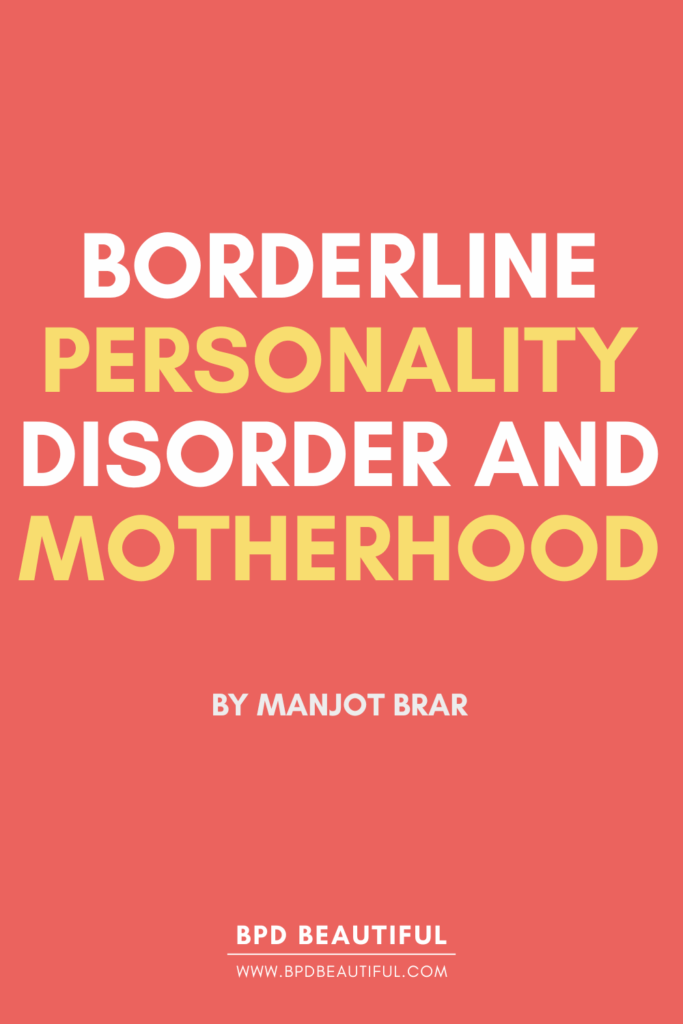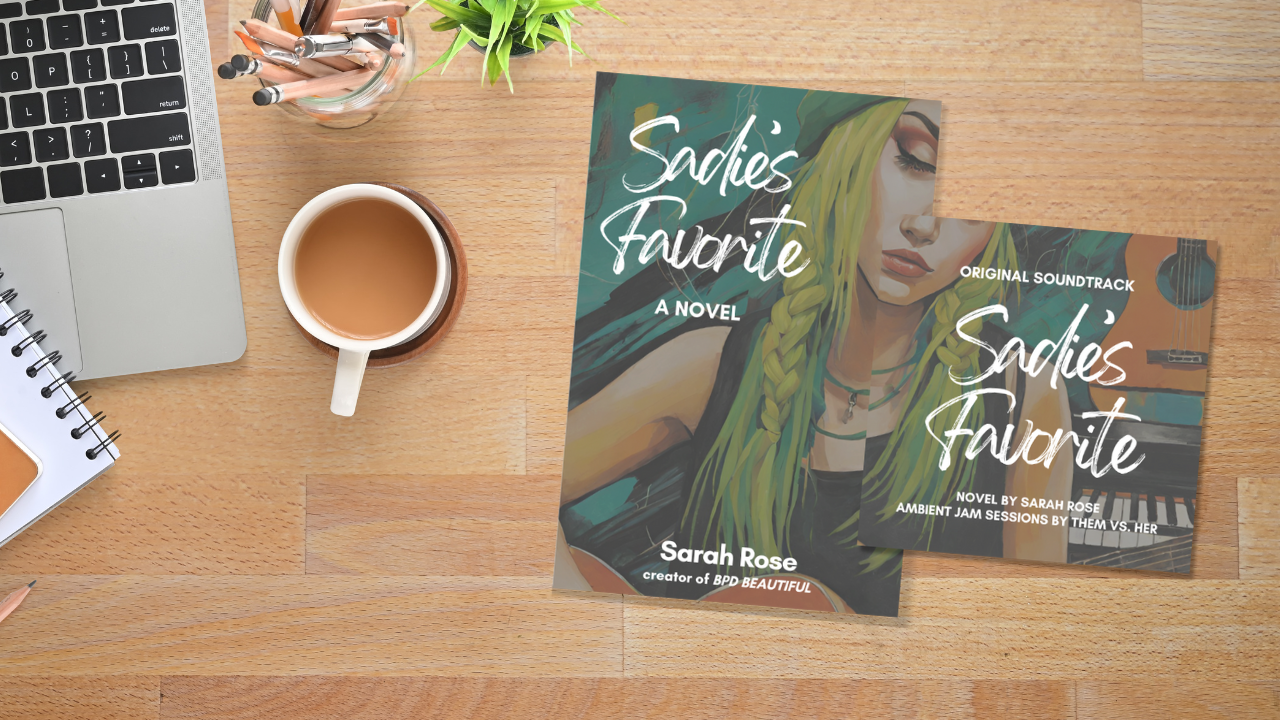Note: in order to reach and help as many people as possible, we’ve used a popular search term (“borderline mother”) throughout this post. This helps us show up in search engines. However, during everyday conversation, we do not recommend using “BPD” or “borderline” as an adjective for people with borderline personality disorder. People with BPD are so much more than their diagnosis and these labels can be stigmatizing.
Pregnancy and early motherhood are life-changing experiences. For any woman, the perinatal period (i.e. pregnancy through the first year after birth) can be a time in which they are vulnerable to poor mental health. For women living with borderline personality disorder (BPD), this stage may bring additional unique challenges, but also opportunities for growth and support.
What Extra Challenges might the Borderline Mother Face During and After Pregnancy?
Research shows that the borderline mother is more likely to experience complications in pregnancy compared to those without the condition. These can include higher rates of gestational diabetes, a greater likelihood of cesarean delivery, and becoming mothers at a younger age (1). Babies may also face higher risks of being born prematurely or with lower Apgar scores, which are quick checks of a newborn’s health after delivery (1).
There’s also evidence that women admitted to specialist mother–baby units for postnatal depression are more likely to also meet criteria for BPD (2, 3).



Sadie’s Favorite: A Novel + Original Soundtrack is a character-driven story about BPD recovery, trauma bonds and breaking away from abuse.
What Impact can BPD have on Parenting, and the Child?
Mother–infant interactions are vital for a child’s development. One study found that while the borderline mothers responds to her baby’s distress as much as mothers without BPD, they did so with less synchrony, meaning their responses were less closely attuned to their baby’s signals (4). Synchrony matters because it helps lay the foundation for emotional regulation and cognitive growth (5).
Over time, children of borderline mothers with BPD have been found to show higher rates of:
- Internalizing symptoms such as anxiety or social withdrawal (6, 7)
- Externalizing symptoms such as aggression or hyperactivity (8)
In adolescence, these children may also face a higher risk of developing mental health conditions themselves. Importantly, withdrawn parenting during infancy has been identified as a strong predictor of intergenerational transmission of BPD (9).
It is important to remember that these findings do not mean the borderline mother does not care for her children but rather that the nature of BPD creates additional barriers in doing an already difficult job. For example, a core feature of BPD is chronic feelings of emptiness that understandably may contribute to withdrawn parenting. In addition, many individuals living with BPD have experienced childhood trauma such as abuse or neglect from their parents, meaning they may lack positive role models for parenting in their life that many new mothers often rely on when caring for their infant.
What Borderline Mothers Want and Need
Qualitative studies highlight that many mothers with BPD are aware of these challenges. They often express concerns about parenting, in particular worries about passing BPD or other mental health issues on to their children (10). Many also wish for parenting-focused support to be integrated into dialectical behavior therapy (DBT), the frontline treatment for BPD (11). Common themes include feelings of guilt, uncertainty, and stress, alongside recognition that their own upbringing shapes how they parent (11).
Despite strong evidence for the negative impact pregnancy can have on women with BPD and their own request for support, there is very little guidance on how to help them during the perinatal period and further research is needed to refine this guidance.
Moving Toward Better Support
One promising approach involves adapting DBT to meet the needs of new mothers. For example, a recent randomized controlled trial in the UK tested an Emotion Regulation Skills Group (ESG) designed specifically for the perinatal period. The program taught emotional regulation, distress tolerance and interpersonal effectiveness (e.g. communicating in ways that maintains self-respect and healthy relationships), whilst ‘keeping baby in mind’. Through discussion, rehearsal, peer feedback, and practice tasks, mothers were encouraged to reflect on how these skills could shape their interactions with their infants. Mindfulness skills are also implemented throughout. Feedback on the program from borderline mothers suggested it helped improve both mental health and family life (12). However as this was a feasibility study i.e. a test run, the number of mothers in the study was not high enough to reliably assess impact. For this, another randomized controlled trial is planned to begin next year with a larger sample.
In the UK, a borderline mother can often be referred by their GP or midwife to specialist perinatal mental health teams through the NHS. These teams offer free, coordinated support — from therapy groups such as the ESGs to more intensive care in Mother and Baby Units, where mothers and infants can stay together during treatment. While access can vary by region, this joined-up approach means borderline mothers don’t have to navigate the system alone.
In the USA, the picture is more complex. Much of the support for a borderline mother is insurance-based or privately funded, which can make support hard to reach — especially for women from lower-income backgrounds. However, there are free or low-cost resources available. Postpartum Support International offers a free helpline (+1-800-944-4773), online support groups, and a directory of local providers. NAMI (National Alliance on Mental Illness) also provides community-based programs, peer support, and crisis guidance. Some university hospitals in the US run perinatal psychiatry or maternal mental-health clinics, which may offer sliding-scale fees or research-based care. Please see here for a detailed list.
Wherever you are, you deserve compassionate, trauma-informed support. Reaching out, even for a conversation, is a powerful first step.

As a BetterHelp affiliate, we receive compensation from BetterHelp if you purchase products or services through the links provided.
Lived Experience: A Mother with Borderline Personality Disorder
“As a mother with borderline personality disorder (in remission since 2021) who had a baby in her late teens, my biggest fear after my son was born was that I wouldn’t be good enough for him. He deserved the best mother possible. But I was a mess. I was a failure. It didn’t take much to convince me I would fail him too. At the time, I didn’t know I had BPD. I didn’t know a lot of things.
No one had to tell me to love my child–that came naturally, and intensely; without second thought–but I certainly needed to be shown skills I hadn’t been taught before. Things like…how to regulate your emotions, feel secure in your identity, overcome a fear of abandonment and have healthy relationships (that you can then model to your child).
For most of my life, my mood swings and abandonment fears were out of control. Looking back on my son’s baby and toddler years, my biggest regret is putting a ‘favorite person’ (FP) over him. It was never a conscious decision to deprioritize him when my fear of abandonment kicked in, but that was the result of my dysregulation.
Something had to change. I knew it. I just didn’t know what.
It took over a decade of therapy, a 9 month long DBT group and over 3 years of consistent DBT skills practice to get where I am today. Over time, as my mindset changed and I grew as a person, I was able to model healthy behaviors for him. I’m still only half the mother I want to be, but now I have hope for the future. Most importantly, I have hope for my son’s future.
My son’s a teenager himself now–the same age I was when I met his father. In a way, my son and I grew up together. He saw me learn how to better regulate my emotions and stop placing others on a pedestal. He’s heard me explain why learning to do both is so important. There was a time I wondered if he was developing BPD too, but as he’s grown and matured, I’m not so convinced. He’s more independent than I was at his age. He’s better able to communicate his feelings and needs, and he takes accountability in a way I couldn’t until my mid-20’s.
He’s seen that treating your mental health isn’t linear and that setbacks are normal, but the most important thing is–he’s learned to keep going, to keep trying. He saw me build something from nothing and even took part in the mission. He was my first hire for BPD Beautiful, after all.
I’m not a perfect mom. Nowhere close. But perfection isn’t the goal. And you don’t have to be perfect either.
While we should always strive to protect our children, shielding them from our struggles completely (or worse, pretending they don’t exist at all) can also negatively affect them. It’s important for kids to witness adults taking accountability and admitting their shortcomings. It’s important for kids to see their parents treat whatever mental health issues they may have, so they know it’s okay to ask for help whenever they need it themselves.
It’s important for kids to see mental health treatment be normalized, so they know they’re not the only ones if they happen to inherit the same condition as you or develop something else. It makes them more empathetic to the mental struggles of others, too. Having BPD doesn’t disqualify you from being an engaged, loving parent. It just means we have to try a little harder than average, and accept that there are things we may need to learn in order to do our best.
It’s not easy. Treating your BPD may be one of the hardest things you’ve ever had to do. But as hard as it is, our children are worth it.”
–Sarah Rose, creator of BPD Beautiful
Final Thoughts
Motherhood is never easy and when combined with the challenges of BPD, it can feel overwhelming. Yet the research shows that with the right support, mothers with BPD are deeply motivated to care for their children and to give them a different life from the one they may have experienced themselves. It is up to researchers and healthcare professionals across the world to advocate for investment in tailored perinatal support for borderline mothers in their countries as currently being trialed in the UK.
References
- [1] Source Link
- [2] Source Link
- [3] Source Link
- [4] Source Link
- [5] Source Link
- [6] Source Link
- [7] Source Link
- [8] Source Link
- [9] Source Link
- [10] Source Link
- [11] Source Link
- [12] Source Link
Find authentic and practical content at BPD Beautiful, where warriors, survivors, and advocates unite to support your journey with BPD.
Discover empowering resources and authentic recovery stories at BPD Beautiful, offering practical tools and a compassionate community.
BPD Resources
BPD in Fiction: Sadie’s Favorite is a Novel + Original Soundtrack, that touches on BPD, favorite person (FP) relationships, healing after abuse, parenting and more. Written by Sarah Rose, creator of BPD Beautiful. Soundtrack performed by Them vs. Her.
Get 20% off your first month of BetterHelp. Get matched with a licensed therapist within 48 hours. Subscriptions as low as $65/week, billed every 4 weeks. Cancel anytime.
Manage your BPD symptoms with a printable workbook.
See our recommended list of books about BPD.
Start a Discussion
Have you tried incorporating these tips to help you in managing the intense emotions that come from having BPD &/or anxiety? Tell us about it in the comments.
Pin this Post
Liked this post? Please help support BPD Beautiful and spread borderline personality disorder awareness by pinning it to Pinterest.





Leave a Reply
You must be logged in to post a comment.